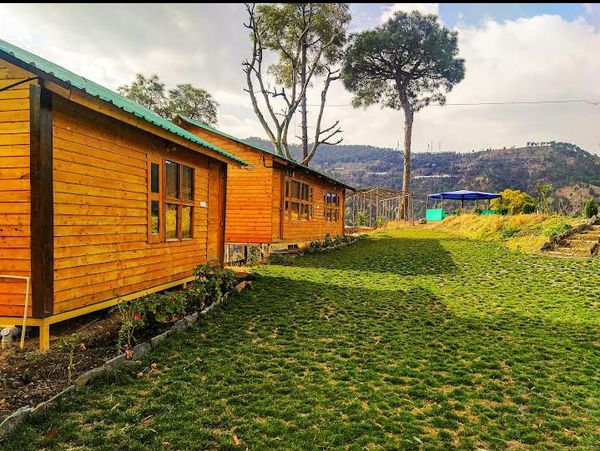Roars and Rivers: A Safari Experience in Nagarhole You’ll Never Forget
 Palakshi Meharwal
12 May, 2025
9 mins read
56
Palakshi Meharwal
12 May, 2025
9 mins read
56

Hidden in the lush, undulating landscapes of southern India lies a wild sanctuary where nature thrives undisturbed: Nagarhole National Park. Also known as Rajiv Gandhi National Park, this biodiverse gem in Karnataka invites you to embark on a safari that seamlessly blends the tranquility of rivers with the thrilling echoes of roaring predators. From elusive tigers to herds of elephants lumbering past teak forests, a safari in Nagarhole National Park is not just an adventure—it’s a memory etched in the soul.
A Forest with a Pulse
Covering over 640 square kilometers and forming part of the Nilgiri Biosphere Reserve, Nagarhole is one of India’s premier wildlife destinations. Its dense forests, interlaced with streams and swamps, provide shelter to an astonishing variety of flora and fauna. The park’s name derives from the Kannada words “naga†(snake) and “hole†(stream), reflecting the serpentine river systems that nourish its ecosystem.
As one of the most well-managed tiger reserves under Project Tiger, Nagarhole stands out not only for its conservation efforts but also for the relatively high chances of spotting big cats in their natural habitat. However, what truly elevates the experience here is its symphony of sensory delights: the calls of Malabar pied hornbills, the scent of damp earth after a monsoon rain, and the sight of sunlight piercing through towering rosewood trees.
The Safari Experience: From Dawn to Dusk
Safaris in Nagarhole are available in two formats: jeep safaris and boat safaris, each offering a unique lens into the wilderness.
Jeep Safaris: The classic way to explore the interiors of the park, jeep safaris typically begin in the early morning or late afternoon. Conducted by trained guides and forest officials, these drives wind through rugged terrain and forest trails. Early risers are often rewarded with sightings of tigers on the prowl or leopards lounging in tree branches. Spotted deer, langurs, wild boars, and Indian gaur (bison) are common companions on this rugged journey.
Boat Safaris on Kabini: For a more serene perspective, boat safaris on the Kabini River—a lifeline that divides Nagarhole from the Bandipur Tiger Reserve—offer a peaceful yet equally dramatic wildlife viewing experience. Herds of elephants bathing or crossing the shallows are a frequent spectacle, especially during the dry season (March to May), when animals congregate near water sources.
The Faunal Mosaic: More Than Just Tigers
While tigers are undoubtedly the star attraction, Nagarhole boasts an impressive list of over 300 bird species and 100-plus mammal species. The forest is alive with the chatter of Indian giant squirrels, the thud of sambar deer, and the occasional trumpet of elephants.
Bird watchers are in for a treat too. Crested serpent eagles, white-bellied woodpeckers, and racket-tailed drongos can all be spotted flitting through the canopy. The park is also home to critically endangered species such as the Indian pangolin and the slender loris, though these are rarely seen.
When to Visit for the Best Experience
Each season in Nagarhole paints a different picture of the forest. The cooler months from October to February are ideal for comfortable weather and increased animal activity. However, if your goal is to spot large mammals, the summer months (March to May) offer better visibility due to thinning foliage.
Monsoon season (June to September), though rich in greenery, can restrict safari operations due to heavy rains. Nevertheless, it’s a time when the forest comes alive in shades of emerald, attracting photographers and botany enthusiasts.
Where to Stay: Luxury in the Wild
The region surrounding Nagarhole offers a range of accommodations to suit various tastes and budgets. Resorts such as Evolve Back (Kabini), Kaav Safari Lodge, and Serai Kabini combine rustic charm with modern comforts. These lodges often organize guided safaris, nature walks, and bird-watching tours, ensuring a holistic forest experience.
For budget travelers, government-run forest lodges and homestays in nearby villages like Kutta and Heggadadevana Kote provide more affordable options without sacrificing the immersive wilderness ambiance.
Ethical Tourism and Conservation
Visiting Nagarhole isn’t just about ticking off a wildlife checklist—it’s also an opportunity to support conservation efforts and promote sustainable tourism. The park has received accolades for its eco-tourism model, which involves local communities in tourism operations, helping generate income while protecting the forest.
Travelers are encouraged to follow responsible tourism guidelines: maintain silence during safaris, avoid single-use plastics, and never feed or disturb animals. Even simple choices, such as hiring local guides or purchasing souvenirs from community artisans, contribute meaningfully to the park’s conservation economy.
Planning Your Visit: Permits and Logistics
Nagarhole National Park is accessible from Mysore (90 km) and Bangalore (236 km), both of which are well-connected by road and rail. The closest airport is Mysore, though many international travelers fly into Bangalore.
Entry to the park is regulated, and safaris are permitted only through designated zones. Booking in advance through the Karnataka Forest Department or authorized resorts is highly recommended, particularly during peak seasons.
Safari timings generally run from:
- Morning: 6:30 AM to 8:30 AM
- Evening: 4:00 PM to 6:00 PM
Permits, camera fees, and guide charges are applicable and may vary depending on the zone and type of safari.
The Takeaway: More Than Just a Holiday
A safari in Nagarhole is far more than a thrilling escape—it’s a journey into one of India’s last remaining wild sanctuaries. Here, amidst the rustling bamboo groves and gurgling rivers, you’re reminded of the planet’s raw beauty and the intricate balance of life that sustains it.
Whether you’re a seasoned naturalist, a wildlife photographer, or simply someone yearning to reconnect with nature, Nagarhole offers an experience that’s immersive, educational, and deeply moving.
Written By:
Palakshi Meharwal



Hotels at your convenience
Now choose your stay according to your preference. From finding a place for your dream destination or a mere weekend getaway to business accommodations or brief stay, we have got you covered. Explore hotels as per your mood.


